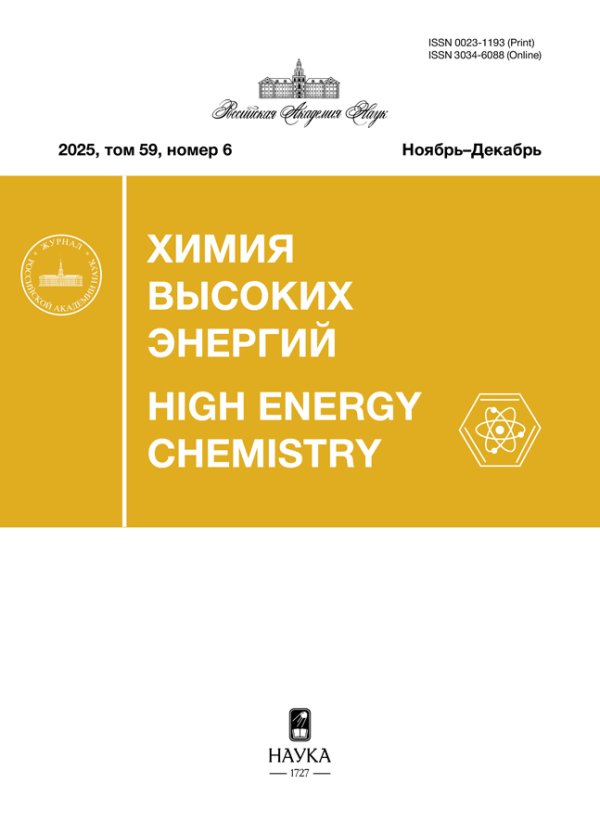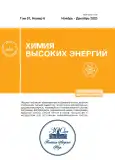Rheological Properties of Gel Systems Based on Gamma-Irradiated Lightly Crosslinked Polyacrylic Acid
- Authors: Abramov V.A.1, Gataullin A.R.1, Bogdanova S.A.1, Demidov S.V.2, Kemalov R.A.3, Allayarov S.R.2
-
Affiliations:
- Kazan National Research Technological University
- Federal Research Center for Problems of Chemical Physics and Medicinal Chemistry, Russian Academy of Sciences
- Kazan (Volga Region) Federal University
- Issue: Vol 57, No 6 (2023)
- Pages: 460-464
- Section: RADIATION CHEMISTRY
- URL: https://journals.rcsi.science/0023-1193/article/view/232794
- DOI: https://doi.org/10.31857/S0023119323060013
- EDN: https://elibrary.ru/QIXTHX
- ID: 232794
Cite item
Full Text
Abstract
The effect of γ-irradiation of the gelling agent Carbomer 141 G, which is lightly crosslinked polyacrylic acid, on the rheological properties of gels based on the carbomer has been studied. It has been found that an increase in the dose of γ-irradiation in air has a destructive effect on the polymer, leading to a decrease in rheological parameters, such as viscosity, yield strength, and hysteresis area. Irradiation of the carbomer in air with doses greater than 300 kGy leads to a significant decrease or the complete loss of its gel-forming properties. At the same time, irradiation of the carbomer with the same dose in vacuum causes as small a decline in viscosity as 2% compared to the initial systems. It has been established that the optimal gelling agent for obtaining stable antibacterial gels is the carbomer irradiated with a dose of 30 kGy.
Keywords
About the authors
V. A. Abramov
Kazan National Research Technological University
Email: sadush@icp.ac.ru
Kazan, 420015 Russia
A. R. Gataullin
Kazan National Research Technological University
Email: sadush@icp.ac.ru
Kazan, 420015 Russia
S. A. Bogdanova
Kazan National Research Technological University
Email: sadush@icp.ac.ru
Kazan, 420015 Russia
S. V. Demidov
Federal Research Center for Problems of Chemical Physics and Medicinal Chemistry, Russian Academy of Sciences
Email: sadush@icp.ac.ru
Chernogolovka, Moscow oblast, 142432 Russia
R. A. Kemalov
Kazan (Volga Region) Federal University
Email: sadush@icp.ac.ru
Kazan, 420021 Russia
S. R. Allayarov
Federal Research Center for Problems of Chemical Physics and Medicinal Chemistry, Russian Academy of Sciences
Author for correspondence.
Email: sadush@icp.ac.ru
Chernogolovka, Moscow oblast, 142432 Russia
References
- Анурова М.Н., Бахрушина Е.О., Демина Н.Б. // Химико-фармацевтический журнал. 2015. № 9. С. 39.
- Muramatsu M., Kanada K., Nishida A., Ouchi K., Saito N., Yoshida M., Shimoaka A., Ozeki T., Yuasa H., Kanaya Y. // Int J Pharm. 2000. V. 199. P. 77.
- Fiume M.M., Heldreth B., Boyer I., Bergfeld W.F., Belsito D.V., Hill R.A., Klaassen C.D., Liebler D.C., Marks J.G.Jr, Shank R.C., Slaga T.J., Snyder P.W., Andersen F.A. // Int. J. Toxicol. 2017. V. 36. P. 59S.
- Филиппова О.Е. // Высокомолек. соед. 2000. Т. 42. С. 2328.
- Khoury S.H.J., Da Silva M.I.B., Mansur C.R.E., Santos-Oliveira R. // Radiat. Phys. Chem. 2018. V. 145. P. 19.
- SilindirM., Özer Y. // PDA J. Pharm Sci. and Tech. 2012. V. 66. P. 184.
- Adams I., Davis S.S. // J. Pharm. Pharmacol. 1973. V. 25. P. 640.
- Deshpande S., Shirolkar S. //J. Pharm. Pharmacol. 1989. V. 41. P. 197.
- Sintzel M.B., Merkli A., Tabatabay C., Gurny R. // Drug Development and Industrial Pharmacy. 1997. V. 23. P. 857.
- Шаймухаметова И.Ф., Шигабиева Ю.А., Богданова С.А., Аллаяров С.Р. // Химия высоких энергий. 2020. Т. 54. С. 122.
- Allayarov S.R., Shaimukhametova I.F., Confer M.P., Bogdanova S.A., Shigabieva Y.A., Dixon D.A. // Polymer Degradation and Stability. 2021. V. 191. P. 109697.
- Шрамм Г. // Основы практической реологии и реометрии / Пер. с англ. И.А. Лавыгина, под ред. В. Г. Куличихина. М.: Колос. 2003. 312 С.
- Самченко Ю.М., Ульберг З.Р., Комарский С.А., Ковзун И.Г., Проценко И.Т. // Коллоидный журнал. 2003. Т. 65. С. 87.
- Huszank R., Szilágyi E., Szoboszlai Z., Szikszai Z. // Nucl. Instruments Methods Phys. Res. Sect. B Beam Interact. Mater. Atoms. 2019. V. 450. P. 364.
- Махлис Ф.А. // Атомная энергия. 1969. Т. 27. С. 323.
Supplementary files













